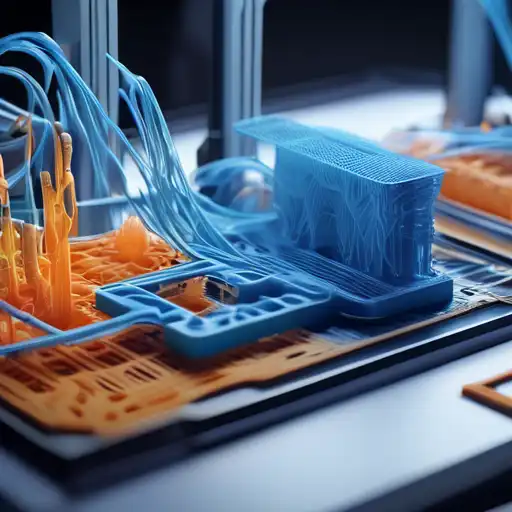The Revolutionary World of 3D Printing
3D printing, also known as additive manufacturing, is a process of creating three-dimensional objects from a digital file. This technology has been around since the 1980s but has gained significant attention in recent years due to its potential to revolutionize manufacturing, healthcare, and even the construction industry.
How Does 3D Printing Work?
The process begins with a digital 3D model, which is then sliced into thin layers by specialized software. The 3D printer then builds the object layer by layer, using materials such as plastic, metal, or even concrete. This method allows for complex shapes and structures that would be difficult or impossible to achieve with traditional manufacturing techniques.
The Benefits of 3D Printing
One of the most significant advantages of 3D printing is its ability to reduce waste. Traditional subtractive manufacturing processes often result in a lot of material being discarded. In contrast, 3D printing only uses the material needed to create the object, making it a more sustainable option.
Another benefit is the speed of production. 3D printing can significantly reduce the time it takes to go from a concept to a physical prototype, enabling faster innovation and product development.
Applications of 3D Printing
3D printing is being used in a variety of fields, including:
- Healthcare: Custom prosthetics, dental implants, and even bioprinting of tissues and organs.
- Aerospace: Lightweight components for aircraft and spacecraft.
- Automotive: Custom parts and prototypes for cars and motorcycles.
- Construction: 3D printed buildings and structures, offering a faster and more cost-effective construction method.
The Future of 3D Printing
As technology advances, the possibilities for 3D printing continue to expand. Researchers are exploring the use of new materials, such as graphene, which could lead to even stronger and lighter products. There is also ongoing development in the area of 4D printing, where printed objects can change shape or function over time in response to environmental stimuli.
With its ability to customize products, reduce waste, and speed up production, 3D printing is poised to play a pivotal role in the future of manufacturing and beyond. Whether it's creating personalized medical devices or constructing homes in a fraction of the time, the potential of 3D printing is only beginning to be realized.
For those interested in exploring this technology further, there are numerous resources available online, including tutorials, forums, and courses that can help beginners get started with 3D printing.
